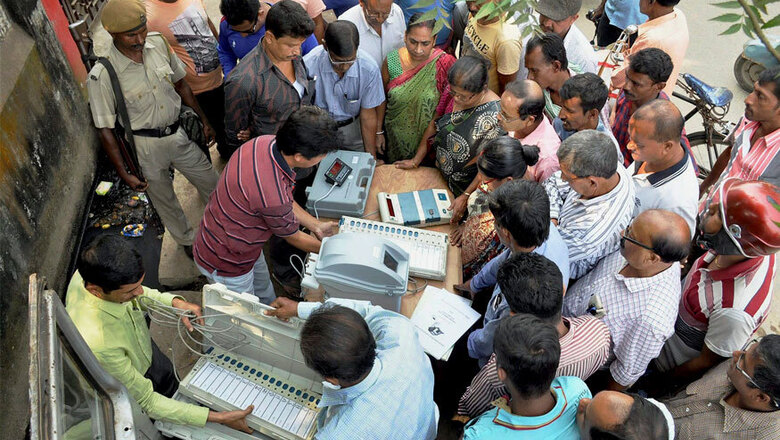
views
Looking at the current political landscape in the country today, one must wonder how people vote. What makes people decide in favour of one political party over the other?
It is my contention that individuals use heuristics to decide on whom to vote for. Heuristics can be defined as cerebral shortcuts to reduce the cognitive load. It may be simplistically called a mental rule of thumb that facilitates decision-making.
So, one must understand how heuristics are formed. One of the major approaches towards formation of heuristics is predicated on agenda-setting theory. Agenda setting theory contends that one can determine the attributes or factors on which one takes a decision.
Extending it to an election, one can argue that voting decisions will be made on a select set of attributes or factors that accentuate above all other factors that could possibly influence decisions.
For instance, how do people purchase a laptop? People usually look at a few selected attributes such as RAM, processor speed and hard disk space. In other words, the entire engineering behind the developing of a laptop is condensed to three or four major features. These features are then strongly promoted and highlighted at all communication settings and selling points. Hence, these features become the heuristics for a decision on purchase of a laptop, as consumers evaluate different types of laptops based on these selected attributes.
In other words, one is not expected to be a computer science engineer to purchase a laptop, the industry develops heuristics and consumers take decisions based on those heuristics. These heuristics keep changing with time and consumer interest. In other words, screen size and CD slot were important determinants early on but are no longer relevant.
Similarly, one is not expected to be a political scientist to be a voter.
In a political situation, heuristics are developed and are available for voters to choose their leader. It may be contended that these factors could be developed and made available by public, media or political parties.
In other words, the public, via institutions such as religious groups, unions, clubs and associations, on matter of public requirements, can form the determining factors for voting.
The media, based on audience interests, can frame these heuristics. Political parties, based on nature and type of the constituency, can form another set of heuristics. Given that unions, social clubs and associations no longer play such a vital role in a citizen’s life in India, public is no longer able develop strong heuristics to aid decision-making.
Media, along with political parties is dominating the formation of heuristics today. In other words, there may be several issues plaguing the society today but media and political parties will condense everything to a select few issues such as employment, economic growth, infrastructure, religious tolerance, national security, terrorism and Ram Mandir.
According to many, a month ago the possible and plausible heuristics for the Gujarat Assembly elections were youth, employment and GST. However, the new heuristics have emerged now and these are caste, Ram Mandir and religion.
In other words, the political campaign and ensuing discourse in Gujarat early on was structured around youth, employment and GST. However, now it appears that the campaign and discourse is largely on caste, Ram Mandir and religion.
Additionally, leaders of political party are also judged by voters in a similar fashion. Nobel Laureate Daniel Kahneman contends that individuals use these factors to make decisions when it’s difficult to compute an object or individual.
In other words, one can safely say that political leaders can also be judged on heuristics. Evaluation of political leaders involves computational complexity and hence individuals may rely on heuristics.
Simplistically, a voter may decide on the favourability of a political leader based on these determinants that allow the individual to compare the political leader with an archetype politician in his or her mind.
Given that the archetype politician is now well-defined in India, there may be increasing similarities in their style of campaigning. Consequently, we may have observed a great deal of similarity in campaigning styles and campaign management of political leaders in Gujarat election.
Of course, as in the case of a laptop, brand is an important determinant of choice. However, brands largely determine the choice of a committed buyer, who has prior well-established notions of a product category and product itself.
In other words, political brand do influence voting behaviour, however, it is largely for the voters who have deeper interest in politics and are somewhat pre-committed to a political party. Hence, the committed vote bank of each political party and will decide on the political brand. For the rest, heuristics will an important role.
Writer is the Director of IIM-Rohtak. He is also the author of ‘Swinging the Mandate: Developing and Managing a Winning Campaign’. Views are personal.


















Comments
0 comment